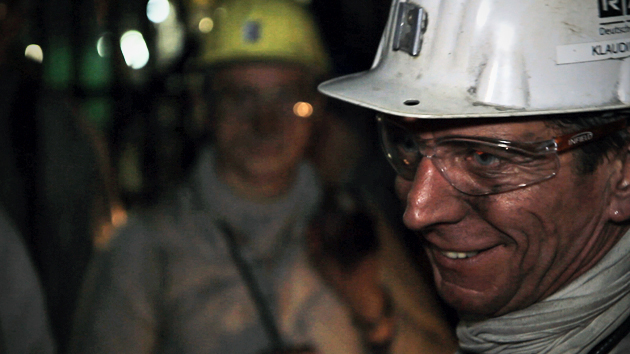As I write this, a new CIA, the Cowboy and Indian Alliance, is completing six days of a tipi encampment on the National Mall in Washington, D.C. Throughout the past week Indigenous people from Canada, Idaho, South Dakota, Minnesota, Oklahoma and elsewhere have joined with ranchers and farmers from Nebraska to dramatize and bring to public consciousness their historic alliance to stop the Keystone XL pipeline. They and their supporters have had meals together, have prayed together, have taken action every day together and have built connections and relationships that are a deep source of hope for our wounded earth and all of its life forms.
Yesterday several thousand people rallied and marched in DC in support of this alliance. We marched for a clean energy revolution away from fossil fuels to a renewables and efficiency-based economy, and we marched in support of the historic righting of the great wrongs to Indigenous peoples that have been done over the last five centuries, since the arrival of Christopher Columbus in the Americas.
We also marched in support of ranchers and farmers up and down the planned route of KXL whose homes and lands will be put in danger if tar sands oil is carried over their property.
For many of us this historic coming together of seemingly unlikely allies may look like a once-a-century type of thing, but it really isn’t. In an article published several days ago by author and organizer Zoltan Grossman he writes of the examples down through US history of European Americans standing with Native Americans in support of their rights and lives:
“The Cowboy Indian Alliance is part of a long, proud tradition that has been conveniently covered up in American history. Our history books present Manifest Destiny as inevitable and uncontested in the 19th century, so we never read about the white Wisconsin settlers who opposed the forced removal of Ho-Chunk and Ojibwe, the Washington settlers put on trial for sympathizing with Coast Salish resistance, or other atypical stories that highlight the ‘paths not followed’ of cooperation rather than conflict.” Cowboy Indian Alliance Rides in Washington
The moral and political power of the new CIA was demonstrated in part by the media coverage that it garnered. On the first day of the encampment on April 22, Earth Day, the opening ceremony down by the U.S. Capitol brought out so many media cameras that it was difficult for non-media people to see and hear the interactions taking place between representatives from different Indigenous nations and from Nebraska farmers and ranchers as they spoke with and presented gifts to local Indigenous leaders from the D.C. area.
Though KXL is the way-of-life-threatening issue that has brought this alliance together, there is no question that the participants in D.C. were about more than just winning a victory over TransCanada and the oil industry. In the speeches from the stage yesterday and in the talks given throughout the week during the evening programs, people were clearly thinking longer-term.
I was struck by some consistent messages from the different Indigenous speakers. All of them, it seemed, spoke about the power of prayer. All spoke about the importance of love, about the joining of the spiritual and physical into an organic whole. All spoke about the importance of the land and its protection.
The fact that I happened to be reading, for a second time, Thomas Berry’s The Dream of the Earth during this Cowboy Indian Alliance week feels like more than a coincidence. I came to the chapter on the Historical Role of the American Indian in the middle of the week. Among the many insightful things he says there are these words, addressed to white people:
“Our first duty is to see that the Indians dwelling here have the land, the resources and the independence they need to be themselves. This involves radical abandonment of the policy of assimilation. To do this requires much of us because of our compulsive savior instincts. We take up the burden of saving others even when in fact we destroy them. . .
“The art of communion with the earth we can relearn from the Indian. Thus a reverse dependence is established. Survival in the future will likely depend more on our learning from the Indian than the Indian’s learning from us. In some ultimate sense we need their mythic capacity for relating to this continent more than they need our capacity for mechanistic exploitation of the continent.”
I’ve believed for years that the issue of the climate crisis, as urgent as it is and overwhelming as it often seems to be, could well be the issue which brings about the alliances, the cultural and political changes, that lead to new ways of organizing society in the future that are much more just, much more loving, much more democratic, than what exists today. For the past week, there on the National Mall, I saw concrete evidence of this belief.



